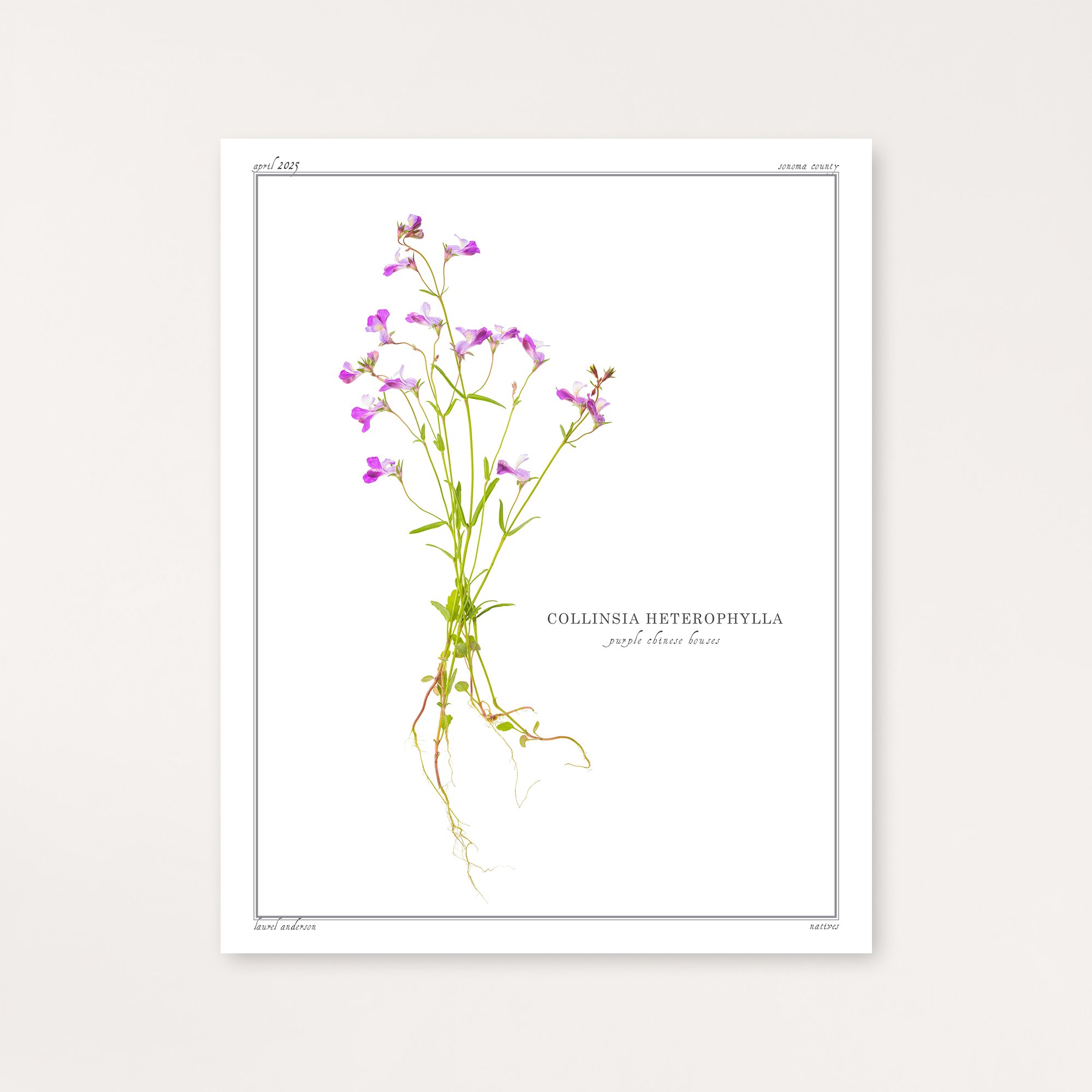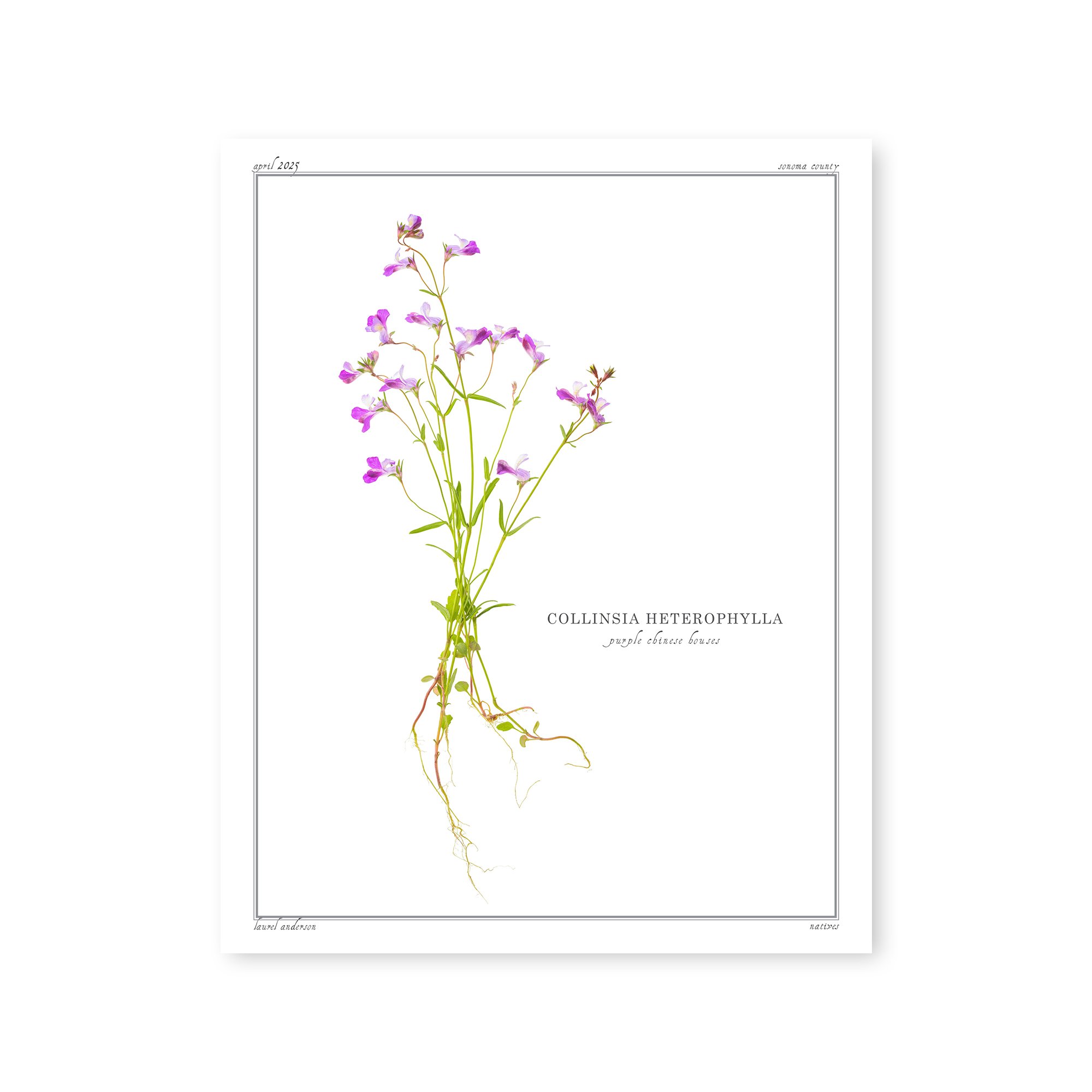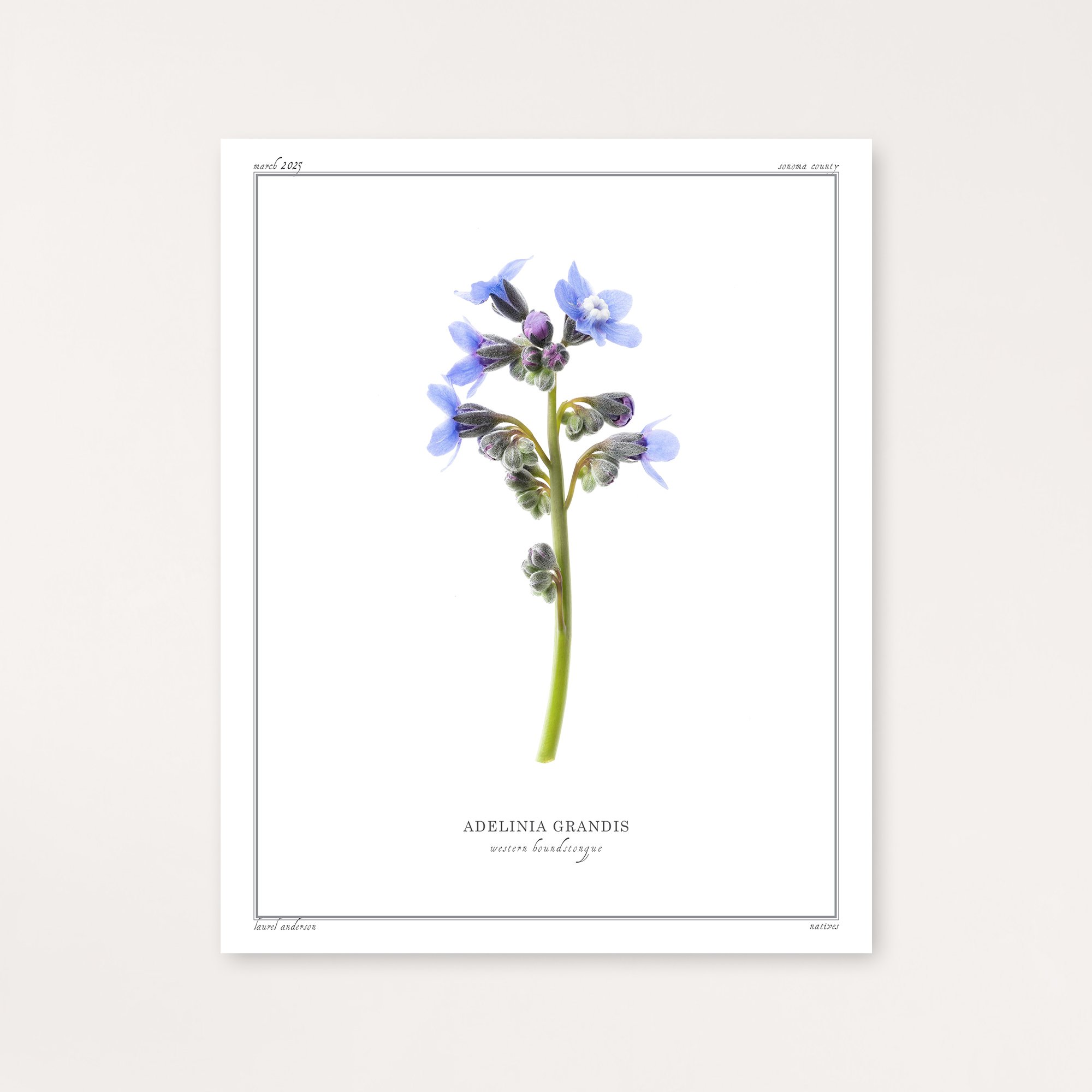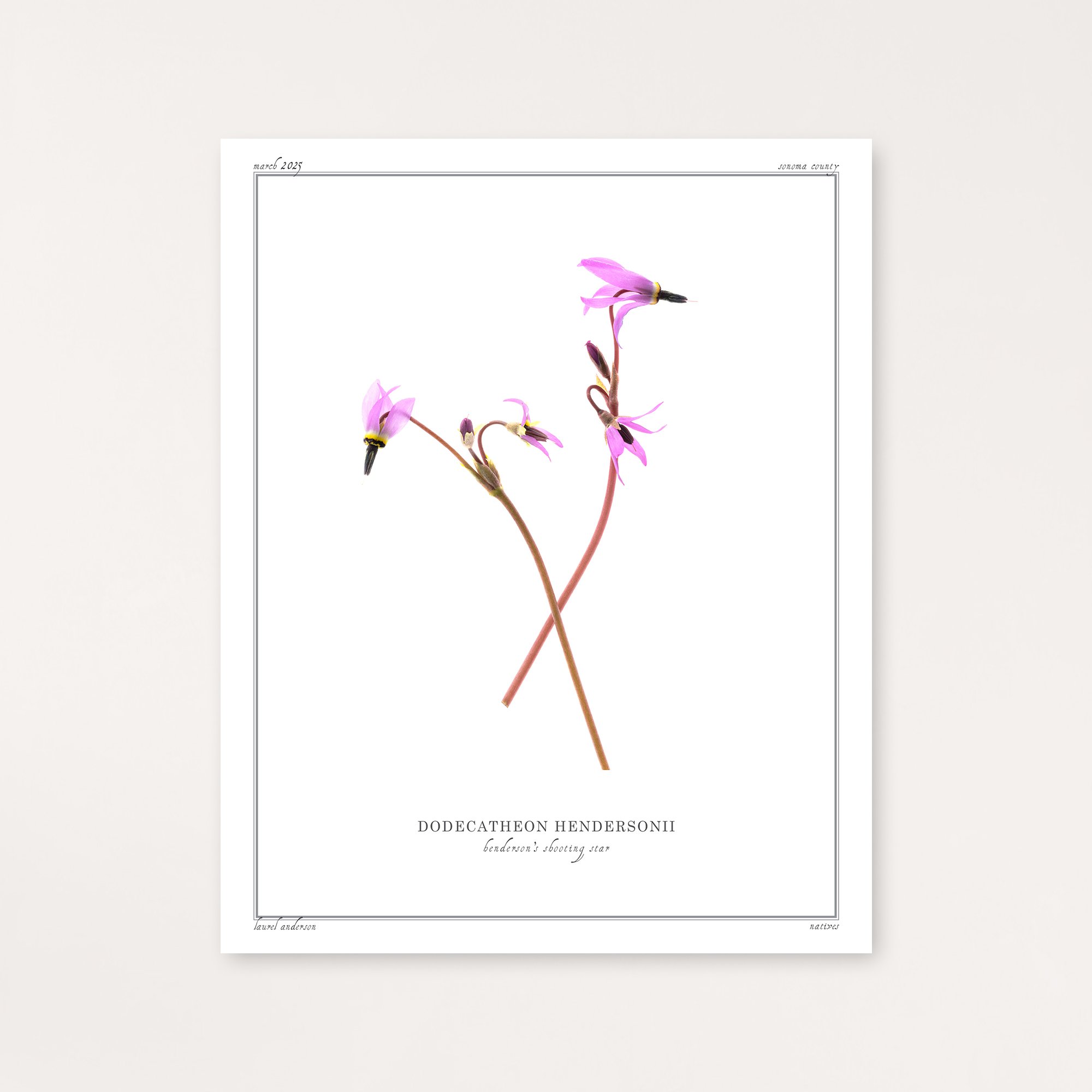 Image 1 of 2
Image 1 of 2

 Image 2 of 2
Image 2 of 2



Purple Chinese Houses
Purple Chinese Houses, Collinsia heterophylla, grow in shady areas throughout California, displaying its tiered whorls of purple and white flowers from March through June. How it got its common name: the unique arrangement of flower clusters that resemble Chinese pagodas with their decreasing diameter as they move up the stem.
This wildflower plays an important ecological role in California's ecosystems, serving as a host plant for Checkerspot butterfly larvae and attracting numerous bee species with its bi-colored blooms.
Each print is made by the artist using archival quality pigment ink on Moab's Entrada Rag Bright 300 paper.
Purple Chinese Houses, Collinsia heterophylla, grow in shady areas throughout California, displaying its tiered whorls of purple and white flowers from March through June. How it got its common name: the unique arrangement of flower clusters that resemble Chinese pagodas with their decreasing diameter as they move up the stem.
This wildflower plays an important ecological role in California's ecosystems, serving as a host plant for Checkerspot butterfly larvae and attracting numerous bee species with its bi-colored blooms.
Each print is made by the artist using archival quality pigment ink on Moab's Entrada Rag Bright 300 paper.










